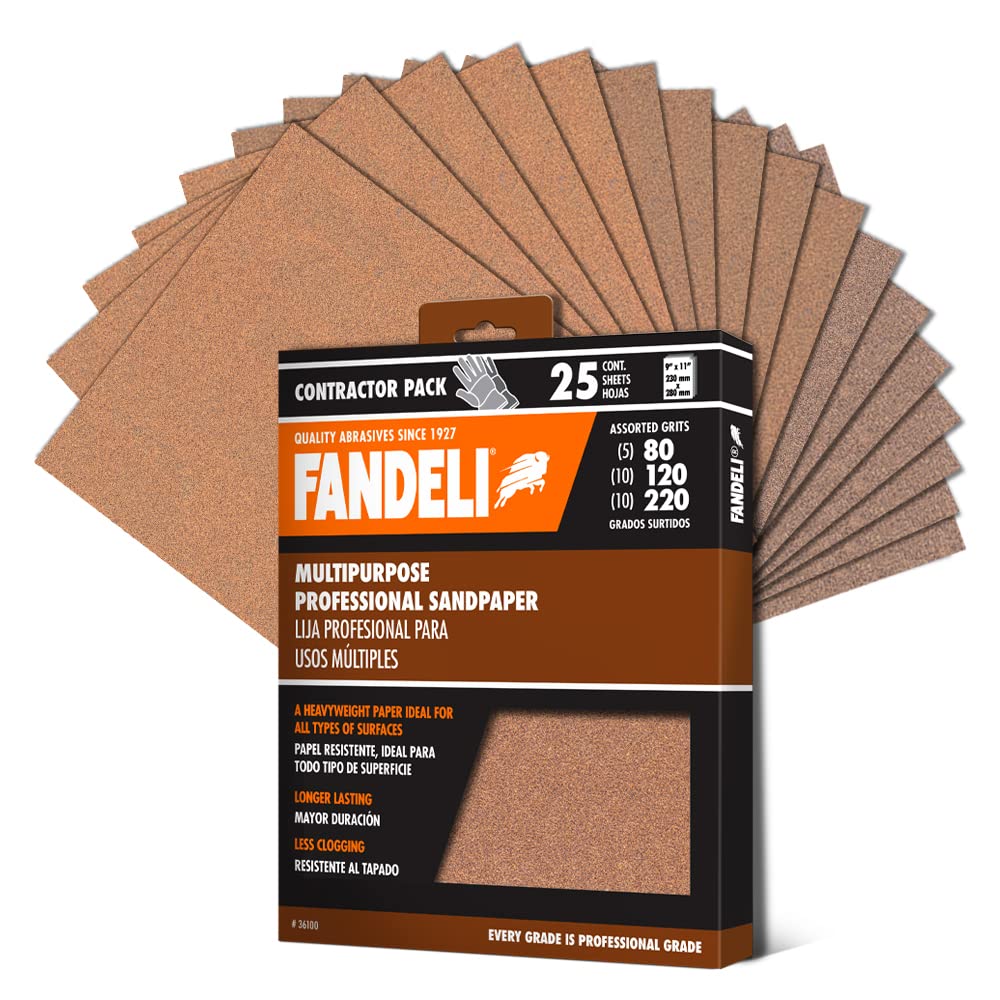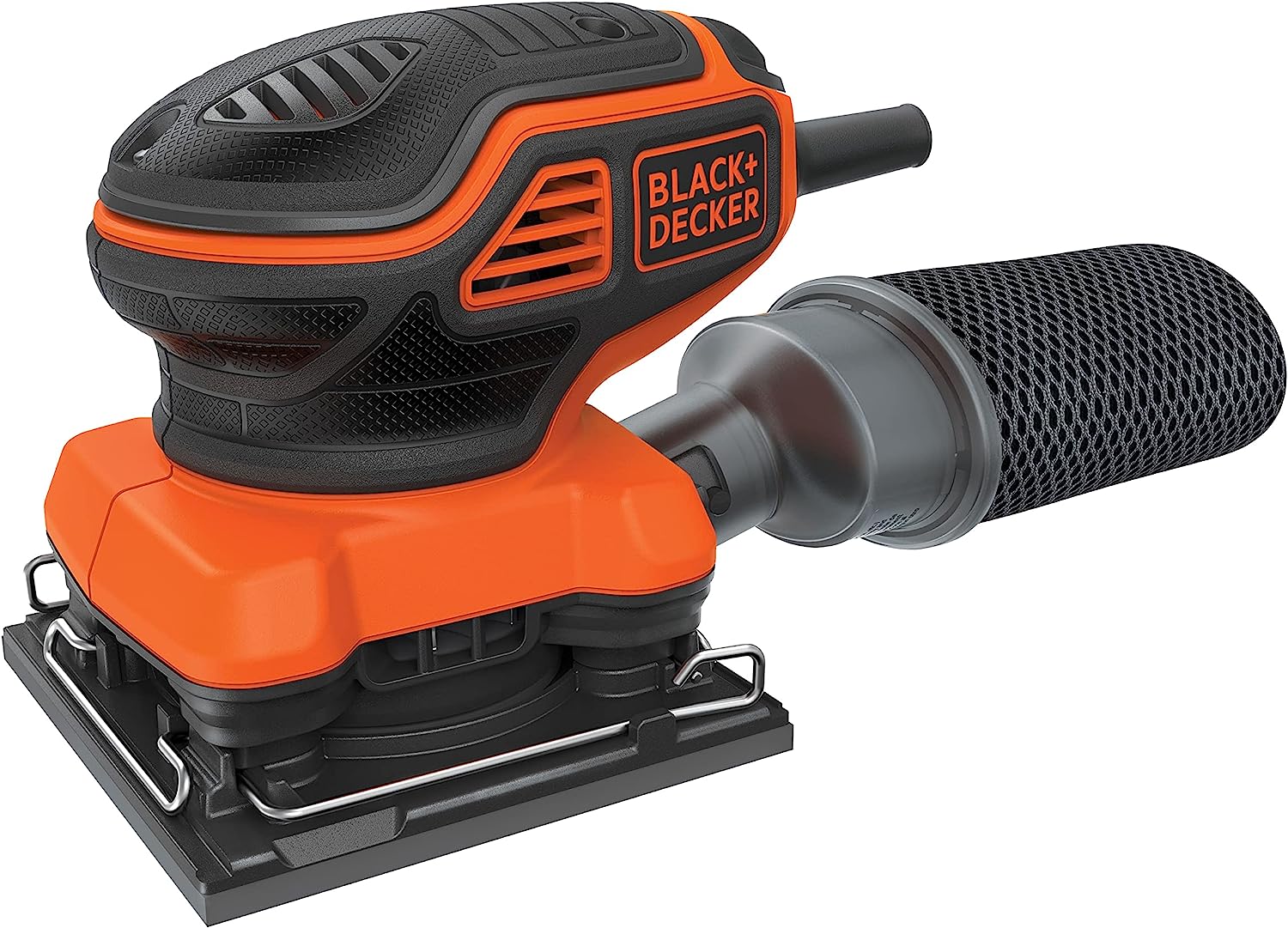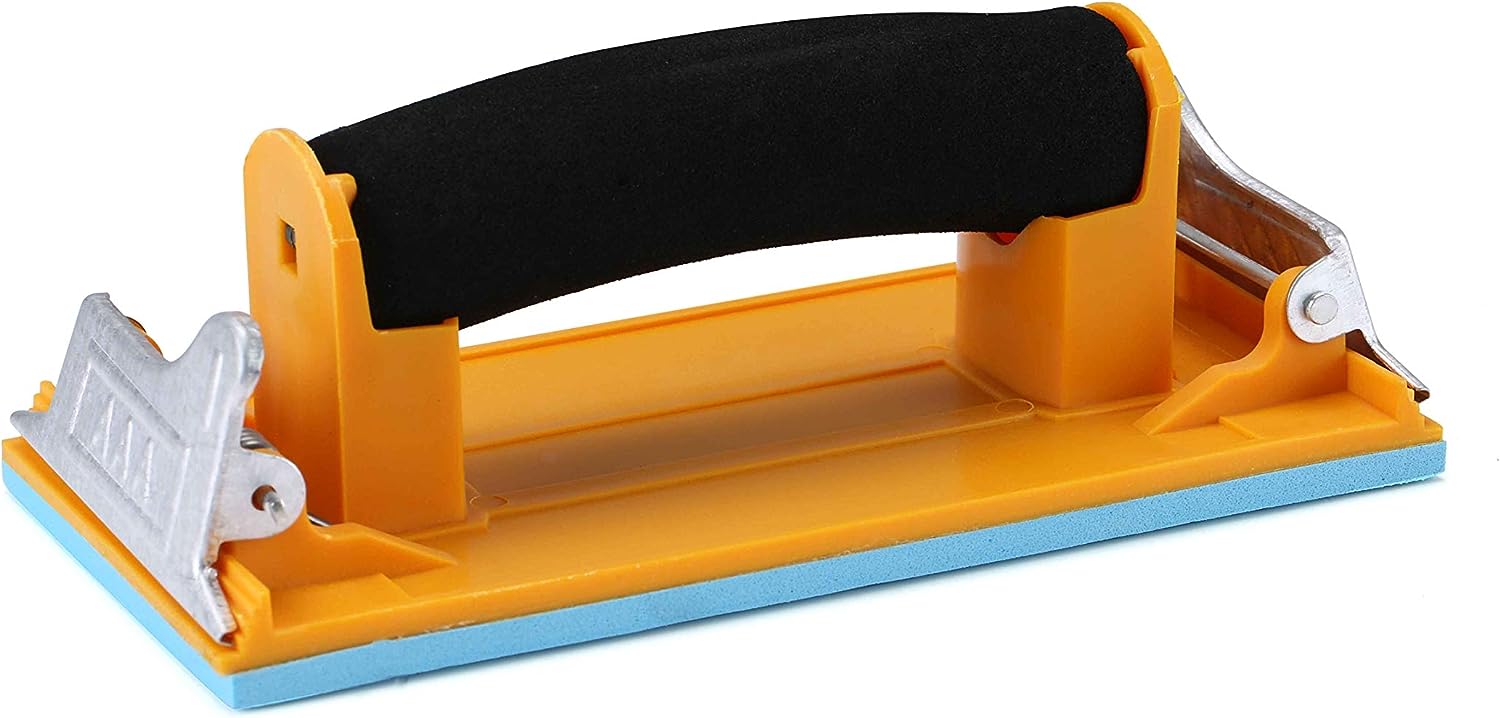Mastering Furniture Refinishing: Selecting the Best Sandpaper
Furniture refinishing is a popular DIY project that allows you to breathe new life into old, worn-out pieces. Whether you’re restoring an antique dresser or giving a fresh look to a tired coffee table, sanding is an essential step in the process. However, with so many options available, selecting the right sandpaper can be overwhelming. In this article, we will guide you through the process of choosing the best sandpaper for your furniture refinishing project.
The Best Sandpaper for Furniture

Fandeli Multi-Purpose Sanding Paper

BLACK+DECKER 2.0 Amp Electric 1/4 Sheet Orbit Sander

Aouker HS85180 Hand Sander
The Importance of Sandpaper in Furniture Refinishing
Sandpaper is a versatile tool that helps you remove old finishes, smooth out imperfections, and prepare the surface for a new coat of paint or stain. It consists of abrasive particles bonded to a paper or cloth backing. The abrasive particles, known as grit, come in various sizes and materials, each suitable for different tasks.
Choosing the right sandpaper is crucial because using the wrong grit or material can damage the wood or fail to achieve the desired results. By understanding the different types of sandpaper available and their specific applications, you can ensure a successful furniture refinishing project.
Understanding Grit Sizes
Grit size refers to the coarseness or fineness of the abrasive particles on the sandpaper. It is denoted by a number, with higher numbers indicating finer grits. The appropriate grit size depends on the task at hand and the condition of the furniture surface.
Here are some common grit sizes and their recommended uses:
- Coarse Grit (40-60): Ideal for removing heavy paint or varnish, shaping wood, or repairing deep scratches.
- Medium Grit (80-120): Suitable for general sanding, smoothing out rough surfaces, and preparing the wood for staining or painting.
- Fine Grit (150-180): Used for final sanding before applying a finish, removing small imperfections, and achieving a smooth surface.
- Extra Fine Grit (220+): Perfect for sanding between coats of finish, creating a silky-smooth surface, and polishing.
Keep in mind that the condition of the furniture and the desired outcome may require using multiple grit sizes. Starting with a coarser grit and gradually progressing to finer grits will yield the best results.
Types of Sandpaper Materials
Not all sandpapers are created equal. Different materials offer varying levels of durability, aggressiveness, and suitability for specific tasks. Here are some common types of sandpaper materials:
- Aluminum Oxide: This is the most commonly used sandpaper material. It is durable, long-lasting, and suitable for a wide range of applications, including wood and metal sanding.
- Garnet: Garnet sandpaper is known for its excellent finish and is often used for fine sanding and polishing wood surfaces.
- Silicon Carbide: Silicon carbide sandpaper is highly aggressive and ideal for sanding hard materials like glass, stone, or metal.
- Emery: Emery sandpaper is made from natural minerals and is commonly used for metalworking tasks.
When selecting sandpaper material, consider the specific requirements of your furniture refinishing project. For general wood sanding, aluminum oxide sandpaper is a reliable choice. However, if you’re working with delicate or exotic woods, you may opt for garnet sandpaper to achieve a smoother finish.
Choosing the Right Sandpaper for Different Surfaces
Not all surfaces are created equal, and different materials require different sandpapers to achieve optimal results. Let’s explore the best sandpaper choices for various common furniture refinishing surfaces:
Wood Surfaces
Wood is the most common material used in furniture, and sanding is essential to bring out its natural beauty. When sanding wood surfaces, consider the following:
- For rough wood surfaces or heavy paint removal, start with a coarse grit sandpaper, such as 40 or 60.
- As you progress, switch to medium grit sandpaper (80-120) to remove scratches and smooth out the surface.
- Finish with a fine grit sandpaper (150-180) to achieve a smooth, ready-to-finish surface.
- If you’re sanding between coats of finish, use an extra fine grit sandpaper (220+).
Metal Surfaces
When refinishing metal furniture or removing rust, sanding is crucial to achieve a clean, smooth surface. Consider the following sandpaper options for metal surfaces:
- For heavy rust or paint removal, start with a coarse grit sandpaper, such as 40 or 60.
- Switch to medium grit sandpaper (80-120) to remove remaining rust or paint and smooth out the surface.
- Finish with a fine grit sandpaper (150-180) to prepare the metal for painting or coating.
- If you’re polishing metal, use an extra fine grit sandpaper (220+) or specialized metal polishing sandpaper.
Glass or Ceramic Surfaces
Sanding glass or ceramic surfaces requires a different approach due to their hardness. Consider the following sandpaper options for these materials:
- For shaping or smoothing glass or ceramic, use silicon carbide sandpaper, starting with a coarse grit and progressing to finer grits.
- Wet sanding with waterproof sandpaper can help prevent overheating and achieve a smoother finish.
- For polishing glass or ceramic, use specialized polishing sandpaper or polishing compounds.
Additional Considerations
Aside from grit size and material, there are a few additional factors to consider when selecting sandpaper for furniture refinishing:
- Sandpaper Sheets vs. Sanding Blocks: Sandpaper sheets are versatile and can be used by hand or wrapped around a sanding block for better control. Sanding blocks provide a more even sanding surface and are ideal for flat areas.
- Sandpaper Rolls and Discs: Sandpaper rolls and discs are suitable for power sanders, such as orbital sanders, belt sanders, or drum sanders. They offer convenience and efficiency for larger projects.
- Sandpaper Sponges: Sandpaper sponges are flexible and conform to irregular surfaces, making them ideal for intricate or curved furniture pieces.
- Micro Grit Sandpaper: Micro grit sandpaper, typically above 1000 grit, is used for ultra-fine sanding, polishing, and achieving a mirror-like finish.
Conclusion
Choosing the right sandpaper is essential for mastering furniture refinishing. By understanding grit sizes, sandpaper materials, and their specific applications, you can achieve professional-looking results. Remember to consider the surface material and condition, and gradually progress from coarse to fine grits for optimal outcomes. Whether you’re working with wood, metal, glass, or ceramic, there is a sandpaper option available to suit your needs. So, equip yourself with the right sandpaper and embark on your furniture refinishing journey with confidence!



















